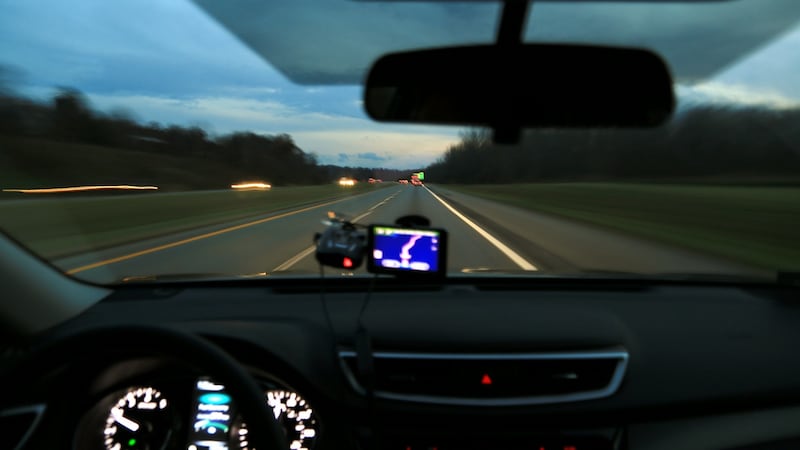If you witness a collision you generally have only your memory and powers of description to rely on. By the time the emergency services arrive, attend to the injured and secure the scene, the police then have to work out the cause and identify who is at fault.
Often by the time a court case comes along, many months later, the details of the collision can be sketchy. Memory, especially in stressful situations can play tricks on us all. New details might be recalled long after the event that had been blacked out by shock. Witnesses can be unreliable and human error is always a factor, so is a windscreen-mounted video camera the solution to finding out who is culpable in a collision?
Technology has advanced at such a rapid pace in the last few years that it makes you feel sorry for science fiction writers trying to conjure up fantastic new gadgets and gizmos to fuel our imagination. Thankfully a dash-mounted video camera leaves less to the imagination when a collision occurs. Video evidence is not yet a definite science but a dash cam that records the lead-up to and a little beyond a collision, while not foolproof, can go a long way to showing the circumstance of the incident.

Wide field of vision
Video can be manipulated quite easily especially in digital form. A skilled editor can electronically place the sun in to an overcast sky to alter the image to suit their needs. The camera lens, it’s viewing angle and aperture all have an effect on the image generated.
Most GoPro-type action cameras shoot with a wide field of vision. This tends to make the central image appear a little further away than the human eye would see it unless you go very close up. You can get a very dramatic and distorted visual effect when you go closer to an object with a super wide angle camera.
Essentially, a camera lens doesn’t always represent what it sees in the same way the human eye would see it. It’s fair to say all camera footage should be viewed in context with a sceptical eye.
Thanks to our Russian friends uploading crash videos to YouTube, the awareness of dash cams is growing. Garmin is making a serious assault on the modest dash cam market with a new product that is relatively tiny in scale.
Traditionally, dash cams have been the size of compact cameras but this new high-tech unit is almost toy like. The simply named Dash Cam 45, 55 and 65 feature a camera body that is half a bank card in size and no deeper in dimension than the width of two fingers. Resolution starts at 1080p, which is standard HD television definition and rises to a higher resolution 1440p with the 55, the 55 is also voice activated.
The 65 model, priced €249, gets a wider 180-degree field of vision that captures more detail from the surroundings with surprisingly low picture distortion.
"The new 180-degree field-of-view allows the Dash Cam 65W to capture moments – like cross traffic details – that can often be missed with other dash cams," said Dan Bartel, Garmin vice president of global consumer sales.
The 55 and 65 feature voice control activation. A “go” alert on the 65 also warns drivers when traffic in front moves off. Red light and speed camera location warnings are available but these useful features depend on the country of use and its laws. Not everyone loves dash cams and their use is banned in some territories for privacy reasons.
Forward-collision alert
The forward-collision alert function flashes a red display screen while the lane-departure warning function flashes orange. These two features are standard on the easy-to-mount device. These alerts are available in new cars, but tend to be part of a costly optional ADAS pack (advanced driver assistance systems).
For a faction of the cost you get these valuable safety alerts. With a dash cam it doesn’t matter how old your car is, as the features will work once the dash cam can see the road ahead.
In a collision, a G sensor activates the save feature and stores the moments leading up to a collision and shortly after it (for secondary collisions) on a micro SD card. After a simple initial setup there is little else to do, as once the device is plugged in the dash cam is working.
A new parking mode uses an additional cable wired to the car’s battery. This allows the device to work even when the engine and ignition is off. So a sneaky car park ding will be recorded and the evidence could be used to find the culprit. Garmin says the parking mode it also is activated when motion is detected.
A novel feature with the Garmin dash cam is the “Travelapse” function. It compresses hours of journey time into minutes of highlights. An 8GB memory card is standard but you can fit up to 64GB cards.
Garmin dash cams can also interact with your smartphone via the Garmin VIRB app. It allows communication and file transfers between the dash cam and mobile device via wifi.
With the recent growth in staged crash for cash incidents and the subsequent effect on insurance costs, dash cams can go a long way to proving users’ innocence, but remember the contrary can be proven too.











